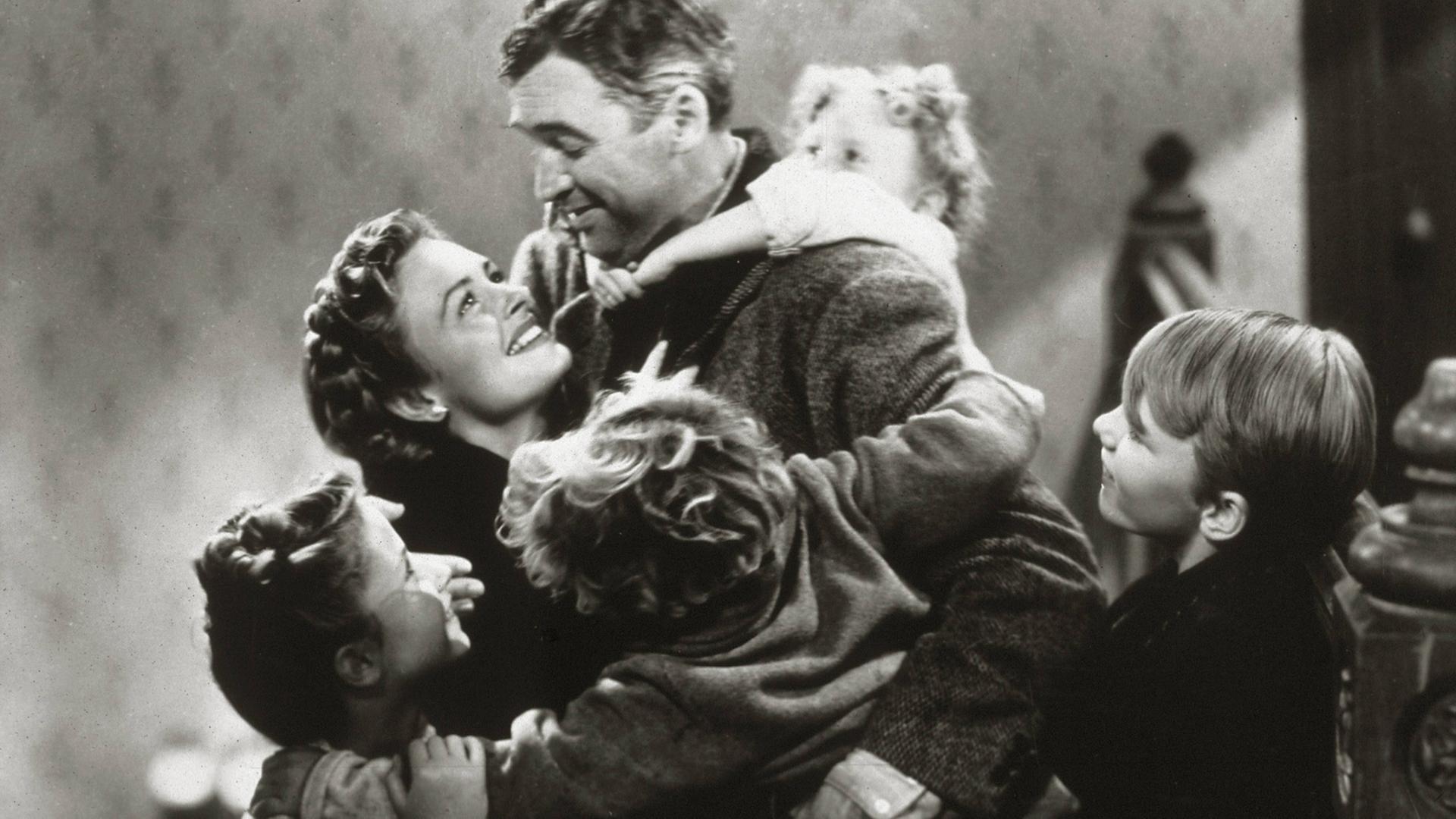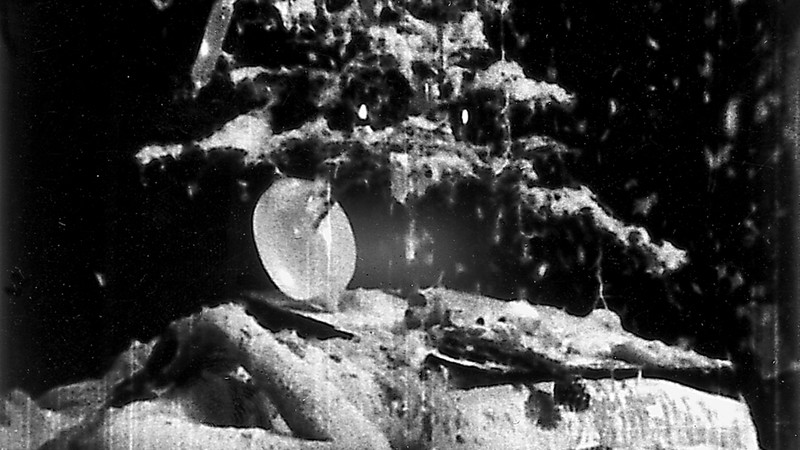Bored of watching the same old Christmas films over and over again? Here are some of our favourite experimental films for the festive season.
Nothing could be more mainstream than a Christmas film – right? The very words conjure an image of a family slumped on a sofa, full of food in the afternoon or evening, watching a feel-good Hollywood movie designed to appeal to as many people as possible. The genre goes all the way back to Georges Méliès’ “Christmas Dream” (1900), and many of the classics still stand up (I’m a sucker for “It’s a Wonderful Life”). The idea has been subverted many times, by creepy animated features like Tim Burton’s “The Nightmare Before Christmas” and the black comedy “Bad Santa”, amongst others. But there are festive treats for those of us who have baffled family and friends over the years by putting experimental film DVDs on their Christmas lists, and here are five of my favourites.

Donna Reed und James Stewart in „It's a Wonderful Life“ © imago stock&people, Image via deutschlandfunk.de
1. Ladislas Starevich’s “The Insects’ Christmas”, 1913
A pioneer of stop-motion animation, Russian-Polish filmmaker Ladislas Starevich was the first to use puppets in such works. Interested in entomology, he used dead insects in several works, of which “The Insects’ Christmas” is the most endearing. There are adorable puppets of Father Christmas and a frog, but the insects are the stars after receiving their gifts, going skiing and ice-skating in a joyous, and masterfully choreographed, forest festival. Cockroaches have never looked so cute.
2. Bořivoj & Karel Zeman’s “A Christmas Dream”, 1946
Czech animator Karel Zeman was a worthy successor to Starevich, and there is a museum in Prague devoted to his lovingly-made puppets. His feature films combined animation with live action, a technique he developed in this short, made with his brother Bořivoj. The concept is familiar – a little girl is delighted (and occasionally worried) by her old toys coming to life, in the hope that she won’t cast them aside for her new presents. The child actress is uncredited, but she reacts perfectly to the doll spinning a plate and playing the piano, in a film executed with such irresistible charm and grace that it became the first to win Best Animated Short at the Cannes Film Festival.
3. Gregory Markopoulos’ “Christmas U.S.A.”, 1949
Arguably less family-friendly than the aforementioned animations (although it depends on who your family is), Markopoulos’ film doesn’t have that much to do with Christmas. Unlike the others on this list, it doesn’t look like Christmas: there are no trees or decorations, no snow or ice. But for a queer person, it feels like Christmas: the strictures of small-town family life are especially repressive here, and the protagonist’s desire to escape them is clear despite the lack of words. The film’s ritualistic climax certainly evokes Christian imagery, as he encounters a man beneath an underpass who holds out his arms like a saint, helping the protagonist to realise and unleash his suppressed desires. And what more could you want for Christmas?
4. Kurt Kren’s “O Tannenbaum”, 1964
Austrian avant-garde legend Kurt Kren’s quickfire documentary of a ‘materialaktion’ by Otto Mühl is slightly more festival than Markopoulos’ film, at least featuring the Christmas tree of its title, but is far more sexually explicit. Mühl’s ‘action’, performed around a fir tree, consists of cutting up meat, covering it in red and green paint that evokes the season, and covering his own naked body, and that of a woman, with it. Kren cuts between the tree, the meat and the performers at dizzying speed, in a brilliant display of his signature style. This, along with “Christmas on Earth” (1963), a record of an orgy by Barbara Rubin, is surely the most visceral festive film around – just don’t expect to see it in the TV guide to the holiday season …

Kurt Kren: O Tannenbaum, 1964, Image via mubi.com
5. Peter Tscherkassky’s “Happy End”, 1996
Peter Tscherkassky’s distinctive use of found footage put him at the centre of a new Austrian avant-garde that emerged a generation after Kren, Peter Kubelka and VALIE EXPORT, and “Happy End” is one of the best examples of his style. It shows an Austrian couple enjoying their Christmas dinner, closing with footage of a dancing woman suddenly freezing, her facial expression hinting at the emptiness behind these festive rituals. Tscherkassky’s rearrangement, backed with composer Michel Chion’s caustic reworking of ‘Chocolat’, aims to render the footage absurd: a stop-motion sequence reminiscent of Jan Švankmajer, where an empty table becomes overburdened with condiments, creates a powerful associative link between Austria’s bourgeoisie and irresponsible opulence. It also reminds us that, going all the way back to Méliès and Starevich, the strangeness of the season provides fascinating creative possibilities for animation in particular.










